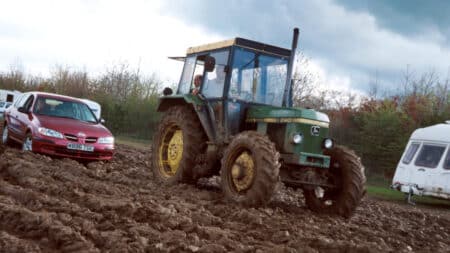
Why Kimi Antonelli was the silver lining in Mercedes' 'worst' F1 race of 2025
As Mercedes dropped down the F1 order in Saudi Arabia, team boss Toto Wolff found a hope in Kimi Antonelli's performance for the team
Unlike some Grands Prix the Indian race near Delhi is remarkably easy to get to. That is if you close your eyes for the taxi journey to the track. In India the ability to fill three lanes of traffic with 20 vehicles is surely unmatched anywhere else in the world.
Despite the traffic mayhem, the locals in Delhi are extremely welcoming, even if many of them have no idea about the Formula 1 race taking place 50km to the south. I was stopped in the centre of Delhi yesterday and asked why I was in the country. “For the Formula 1 race,” I replied. After a small game of charades the penny dropped and he asked, looking at my 100kg frame, whether I was a driver. He clearly hadn’t heard about the weight problems facing the majority of teams next year.
When we finally made it into the paddock (the taxi driver was adamant that it was not where we wanted to go) the mood was subdued. Barring a DNF for Vettel he will wrap up his fourth consecutive championship on Sunday and there’s not much anyone can do about it. He needs to finish no lower than fifth – something he hasn’t done all year bar his retirement in the British Grand Prix – and, considering he has won both the races in India from pole position, the outlook is bleak for title rival Alonso. It’s been a phenomenal display of dominance from the German and Red Bull.
Not only did Vettel win here in 2011 and 2012, but he did so by over eight seconds on both occasions. This may well be the last Indian Grand Prix for a while and the opportunity to make a clean sweep of pole positions and race wins will no doubt have crossed Vettel’s mind.
Indian officials weren’t keen to host the race earlier in the 2014 season, as requested by Bernie Ecclestone, and so were given a year off. The race is supposed to return in 2015, but, with the emergence of new races in Mexico, New Jersey, Austria and Russia on next year’s calendar, it’s a wonder where it will go. Or, indeed, which race will be dropped to make way for it.
The Indian Grand Prix in 2011 was a breath of fresh air for many as the local population embraced the sport in a way not seen in many other countries that had recently taken on an F1 race. However, the initial interest hasn’t been capitalised on and people have questioned the lack of promotion here in India. There are other problems that need to be sorted as well, though.
Firstly, in India the Central Government classes Formula 1 not as a sport, but as entertainment (I know, I can feel some of you wincing…). This seems harmless on the face of it, but Karun Chandhok is quick to point out why it isn’t. “It means that F1 has a lot more hoops to jump through whether they’re to do with police permission or even visas,” he told me. “It’s just a much bigger headache for everyone. It also stops Narain [Karthikeyan] and I from getting many of the grants we could otherwise have had.”
Because of this classification the local state government – Uttar Pradesh – granted an entertainment tax exemption to the Indian Grand Prix organiser Jaypee Sports International (JSI) before the first race in 2011. However, since then the local state government has changed and it has contacted the Supreme Court to ask for the exemption to be withdrawn.
Part of the original deal was that JSI deposited the tax exemption amount in a No Lien account. This they did, but the current local government is arguing that there is a 120 million Rupee (£1.25m) shortfall. Only today the Supreme Court has announced that it will hear a petition on Friday which has put forward the idea of canceling the race due to unpaid taxes.
The tax problem is part of a larger question in India at the moment of whether or not Formula 1 is worth the investment of both money and time. Bar cricket every sport in India is hugely underfunded and the country struggles with poverty in many areas. Some are asking the question, though, of whether Formula 1 has been given a proper chance. The promotion hasn’t been as good as it could have been, but cricket was only catapulted into the big time when India won the 1983 World Cup. Yes, there is money being invested by sponsors in cricket now, but that seed was sown 30 years ago. “Apparently Mark [Webber] and I don’t come from Australia, we come from Ricky Ponting country,” commented Ricciardo on India’s devotion to cricket.
The main general elections in India are coming up in April next year. Whether or not there will be a race in 2015 is as much to do with who is elected – and whether they see a future for Formula 1 in India – as it is with Bernie Ecclestone’s ability to find a date for the event.
One thing that is certain in the F1 paddock is that Russian Daniil Kvyat will race for Toro Rosso next year. The deal was announced, to the surprise of many, on Monday, much to the chagrin of Antonio Felix da Costa fans. If the seat had become available at the end of 2012 da Costa would have been certain to step into Formula 1. However, the sport is as much about timing as it is about form, talent and money.
Kvyat has only won one single-seater championship – the 2012 Formula Renault 2.0 Alps, a combination of the late Formula Renault Middle European and Formula Renault Italia championships – but Helmut Marko and his Red Bull Young Driver programme have clearly seen something in him this year. He’s dovetailed drives in GP3 and the European F3 Championship and while he’s impressed in both, the step up to Formula 1 will be a big one.
He’ll have plenty of opportunity, though, as even without India in 2014 there are still 22 races on the calendar (for the time being…).
Click here for more Grand Prix coverage
Click here for more from Ed Foster

As Mercedes dropped down the F1 order in Saudi Arabia, team boss Toto Wolff found a hope in Kimi Antonelli's performance for the team

Zak Brown is still adamant on his approach that Lando Norris and Oscar Piastri are ‘number ones’ at McLaren. But how long will it be before history repeats itself and takes a sour turn?

It's 40 years since Ayrton Senna's incredible first F1 win at Estoril – we captured the brilliant grand prix car he did it in for this month's magazine

Twenty-five years ago, the British GP was the subject of a 'prank' by the powers that be as Bernie Ecclestone and Max Mosley made the BRDC hold the race on Easter Sunday. But the chaos that ensued didn't have the desired effect, as Matt Bishop recalls